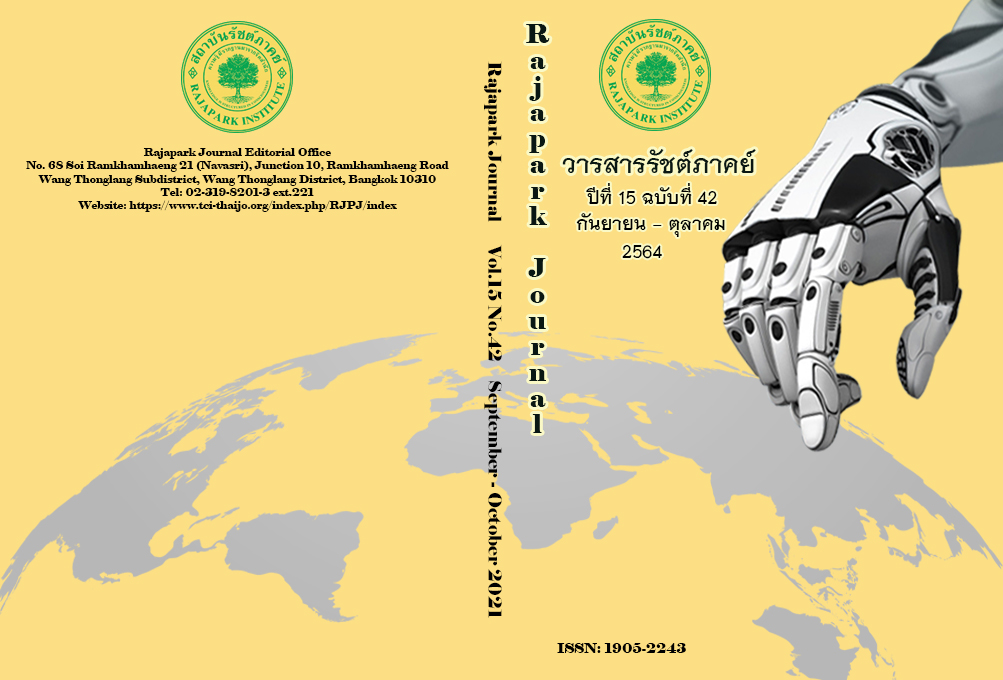The Development for Recreational Tourism in Nakhon Nayok Province by Applying Service Marketing Mix in the Recreational Tourists’ Perspective
Main Article Content
Abstract
The objectives of this research were to consider the degree of assessment of the mixed factors in marketing services and recommend the recreational tourism industry's advancement in Nakhon Nayok. As indicated by the idea of the marketing mixed factors in the perspectives on the tourist attraction, the sample group was travelers in the recreational activities in Nakhon Nayok. There were 400 samples were utilized as a survey information assortment. The confidence value was 0.95. Information was examined by descriptive statistics by discovering the mean and standard deviation. The results of the study found that the level of opinions, factors, and marketing mix of recreational tourists in Nakhon Nayok, in general, were at a significant level. (M = 3.84, SD = 0.44) When considered separately, the results showed that the side with the highest mean, for example, physical characteristics, was at a high level (M = 3.87, SD = 0.60), trailed by the personal factor at the high level (M = 3.85, SD = 0.54), product factor was at significant level (M = 3.83, SD = 0.60), channel factor was high (M = 3.82, SD = 0.63), marketing promotion factor was at significant level (M = 3.81, SD = 0.64), service process factors were at a significant level (M = 3.79, SD = 0.62), and the side with the most un-normal was the price factor at an undeniable level (M = 3.71, SD = 0.59), separately. The development approach comprises 7 regions which are product, price, distribution channel, marketing promotion, service process, physical characteristics. These parts will be a rule for the improvement of recreational tourism in Nakhon Nayok.
Article Details
Views and opinions appearing in the Journal it is the responsibility of the author of the article, and does not constitute the view and responsibility of the editorial team.
References
Department of Physical Education. (2014). Recreation. Retrieved November 27, 2020, from http://www.dep.go.th.
Department of Tourism. (2019). International Tourist Arrivals to Thailand 2019. Retrieved August 8, 2020, from http://www.tourism2tourism.go.th
Klinchuen, N., & Na Thalang, C. (2017). Guidelines to Promote Recreational Attraction in Samutprakan Province. Dusit Thani College Journal, 11(1), 167-183.
Middleton, V. T. C. et al. (2009). Marketing in Travel and Tourism. (4th ed.). Burlington: Butterworth-Heinemann.
Ministry of Tourism & Sports. (2016). International Tourist Arrivals to Thailand 2016. Retrieved August 8, 2020, from https://www.mots.go.th/more_news_new.php?cid=486.
Minsiri, P. (2019). Nakhon Nayok Recreational Tourist Attraction. Retrieved November 12, 2020, from http://travel.kapook.com/view206012.html.
Perreault, W., Cannon, J., & McCarthy, E. J. (2018). Essentials of Marketing (16th ed.). New York: McGraw-Hill Education.
Proyrungroj, R. (2015). Tourist Behavior. Bangkok: Odeon Store.
Srisa-ard, B. (2010). Basic research (8th ed.). Bangkok: Suweeriyasan.
Tantikanthon, R. (2016). Guidelines to Developing the Recreational Attraction in Ratchaburi(Master of Arts, Hotel and Tourism Management). University of Phayao.
Tourism Authority of Thailand. (2016). Final Report of Thailand Tourism Development within 10 years. Economic Tourism and Sports Division, Ministry of Tourism and Sports.
Yamane, T. (1973). Statistics: An Introductory Analysis (3rd ed.) New York: Harper & Row.


